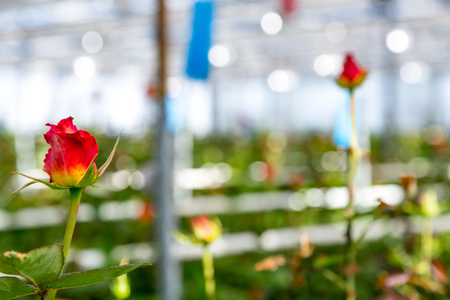Preparing Your Allotment for Winter
As the British winter approaches, thoughtful preparation of your allotment is essential to ensure both the protection of your soil and the longevity of your gardening tools. The first step in winter allotment care is a thorough tidy-up. Remove any spent crops, fallen leaves, and plant debris to reduce overwintering pests and diseases. Pay particular attention to perennial weeds such as couch grass and bindweed, as these can thrive in the mild, damp conditions often found in the UK. Once your plot is clear, consider applying a layer of organic mulch or well-rotted manure to bare soil. This practice not only suppresses weed growth but also helps to insulate the ground from frost and enriches the earth for spring planting. Alternatively, using a breathable membrane or horticultural fleece can provide added protection against heavy rainfall and erosion common in British winters. Don’t forget your tools—clean, dry, and oil them before storage to prevent rust caused by the damp UK climate. By following these best practices tailored to local weather patterns, you’ll be well on your way to maintaining a healthy and productive allotment throughout the colder months.
2. What to Grow in Winter
Winter allotment gardening in the UK presents a unique opportunity to cultivate robust crops that thrive in colder temperatures. Selecting the right varieties ensures your plot remains productive, even when daylight hours are limited and frost is common. Below is a guide to hardy British vegetables and crops that are particularly suited for winter planting, offering both resilience and reliable yields.
Hardy Vegetables for the British Winter
When planning your winter allotment, focus on vegetables known for their ability to withstand low temperatures and adverse weather. The following table outlines several popular choices:
| Crop | Varieties | Planting Time | Main Benefits |
|---|---|---|---|
| Brassicas (Cabbage, Kale, Brussels Sprouts) | Savoy Cabbage, Curly Kale, Bedford Brussels | Late summer to early autumn | Frost-hardy, rich in nutrients, continuous harvest |
| Broad Beans | Aquadulce Claudia, Super Aquadulce | Autumn (October-November) | Early spring harvest, improves soil structure |
| Overwintering Onions | Radar, Senshyu Yellow | September to November | Matures earlier than spring-sown onions, robust growth |
| Garlic | Solent Wight, Germidour | October to December | Low maintenance, excellent flavour development in cold weather |
Sowing and Growing Tips
To maximise success, choose sheltered areas of your plot and prepare the soil with plenty of organic matter. Use cloches or fleece for extra protection during severe frosts. Successional sowing—planting at intervals—ensures a steady supply of fresh produce throughout winter.
Cultural Considerations for British Allotments
Embrace traditional practices such as crop rotation and companion planting to maintain soil health and deter pests naturally. Many British allotmenteers also recommend mulching with well-rotted manure or leaf mould to insulate roots and enhance soil fertility during the colder months.

3. Soil Management in the Colder Months
As winter sets in across the UK, maintaining soil health becomes a crucial task for allotment holders aiming to ensure productive plots come spring. The colder months can be harsh on soil structure and fertility, but with a few targeted strategies, you can protect and even enhance your plot’s foundation.
Protecting Soil Structure
Heavy winter rain and frost can lead to soil compaction and erosion if left exposed. To prevent this, cover bare soil with organic mulches such as well-rotted manure, leaf mould, or straw. These materials provide a protective barrier, reduce nutrient leaching, and add organic matter as they break down—key factors for healthy UK allotment soils.
Composting Tips for Winter
Composting need not stop when temperatures drop. Continue adding kitchen scraps (excluding meat and dairy) and garden waste to your compost heap or bin. Turn the pile occasionally to aerate it, and insulate with cardboard or old carpet offcuts to retain heat. This will help beneficial microbes remain active throughout winter, creating rich compost ready for spring digging-in.
Green Manure: An Allotment Essential
Sowing green manure crops is an excellent way to maintain soil fertility over winter. Hardy varieties such as field beans, winter tares, or grazing rye are well-suited to the UK climate. These plants suppress weeds, prevent erosion, and fix nitrogen in the soil. Simply dig them in before they flower in early spring for a natural nutrient boost that benefits subsequent plantings.
Key Takeaways for UK Growers
- Mulch bare areas to shield soil from harsh weather
- Keep composting active by insulating heaps
- Sow green manure for improved structure and fertility
By prioritising these practices during winter, you’ll set your allotment up for a thriving growing season ahead.
4. Protecting Your Plants from Frost and Pests
Winter in the UK brings a unique set of challenges for allotment holders, with frost and pests being chief among them. However, by employing a mixture of practical techniques and traditional British methods, you can effectively shield your crops from the harshest weather conditions and deter common winter pests.
Shielding Crops from Frost
The unpredictable British winter means sudden cold snaps are always a risk. Protective coverings such as horticultural fleece and cloches are invaluable for keeping tender plants safe. Fleece is lightweight yet provides essential insulation, while cloches – whether made from glass, plastic, or even upcycled bottles – create mini-greenhouses that trap warmth around seedlings and overwintering vegetables.
| Protection Method | Best For | How to Use |
|---|---|---|
| Horticultural Fleece | Salad leaves, brassicas, root vegetables | Drape loosely over crops and secure at edges to prevent wind displacement |
| Cloches (glass/plastic) | Young seedlings, overwintering herbs | Place directly over plants for targeted frost protection |
| Mulching with Straw/Compost | Root crops, garlic, onions | Spread a thick layer around base to insulate soil and retain warmth |
Pest Prevention During Winter
While many pests hibernate, some – like slugs, snails, and rodents – remain active through milder spells. Traditional British approaches such as beer traps for slugs or encouraging natural predators (like hedgehogs) can be highly effective. Additionally, regular plot checks and the removal of decaying plant matter will reduce hiding places and food sources for these unwanted visitors.
Common Winter Pests & Solutions
| Pest | Signs of Damage | Traditional Control Methods |
|---|---|---|
| Slugs & Snails | Nibbled leaves, slime trails | Beer traps, hand-picking at dusk, scatter sharp sand/grit around plants |
| Mice & Rats | Dug-up seeds/bulbs, chewed roots | Wire mesh barriers, tidy plots to remove shelter spots |
Tried-and-True Allotment Wisdom
The collective experience of local allotment societies often holds invaluable advice: use upturned pots stuffed with straw to provide homes for beneficial insects or set up bird feeders to attract species that naturally control pests. These traditions not only protect your winter crops but also foster community spirit typical of British allotment culture.
5. Ongoing Plot Maintenance Tasks
Winter is an ideal time for essential allotment maintenance that ensures your plot remains productive, safe, and ready for the coming growing season. The British winter, with its damp conditions and occasional frosts, presents unique challenges that require careful management. Addressing these tasks not only protects your investment but also makes spring preparations far more straightforward.
Essential Winter Routines
Path Clearing
During winter months, pathways can become slippery with moss, leaves, or mud. Regularly clearing paths is crucial for safety and ease of access. Use a stiff brush to sweep away debris and consider adding wood chips or gravel to improve footing. This simple routine minimises accidents and keeps your allotment tidy during the wetter seasons typical in the UK.
Repairing Structures
Winter weather often exposes weaknesses in sheds, greenhouses, fences, and raised beds. Inspect all structures for signs of rot, loose panels, or broken glass. Repair any damage promptly to prevent further deterioration from wind or rain. Treat wooden surfaces with preservative suitable for British winters, and check that greenhouse panes are secure to keep out drafts and pests.
Planning for the Next Season
Use quieter winter days to plan crop rotations and order seeds for spring. Review what worked well this year and what could be improved. Drawing up a planting schedule tailored to your local climate will help you make the most of your plot’s potential. Many UK allotmenteers use this time to compost organic matter, sharpen tools, and clean pots—ensuring everything is in top condition when the growing season returns.
Conclusion: Staying Proactive
Consistent maintenance throughout winter not only preserves your allotment’s infrastructure but also sets you up for success in the new year. By staying proactive with these ongoing tasks, you ensure your plot remains a safe, efficient, and enjoyable space all year round—a hallmark of good British allotment care.
Community and Wildlife Considerations
Maintaining your allotment during winter is not only about personal productivity but also about fostering a sense of community and supporting local wildlife. Contributing to your local allotment community during the quieter months helps strengthen relationships and builds resilience among plot holders. Consider organising or participating in winter work parties, where members can collectively tackle tasks such as repairing communal pathways, tidying shared spaces, or improving composting areas. Sharing surplus winter crops, seeds, or gardening advice at these gatherings nurtures a collaborative spirit and ensures everyone benefits from collective knowledge.
Wildlife-Friendly Practices on Your Plot
Winter offers unique opportunities to enhance biodiversity on your allotment. Leaving some seed heads and standing stems provides vital food and shelter for birds and beneficial insects. Creating log piles or leaf heaps in quiet corners of your plot offers safe overwintering habitats for hedgehogs, frogs, and invertebrates. If possible, install bird feeders and keep them stocked with appropriate seeds or fat balls to support local bird populations when natural food sources are scarce.
Supporting Pollinators and Beneficial Insects
Even during the colder months, you can plan ahead by incorporating pollinator-friendly plants that flower early in spring, such as crocuses or snowdrops. These will provide essential nectar for emerging bees and other insects as soon as temperatures rise. Avoid excessive tidying; allowing nature to take its course helps sustain microhabitats crucial for overwintering pollinators.
Engaging with Allotment Groups
Stay connected with your allotment association throughout winter by attending meetings, sharing updates online, or participating in planning discussions for the coming growing season. Volunteering for winter projects—like building new bug hotels or planting native hedgerows—demonstrates commitment to both your fellow gardeners and the wider environment. By integrating wildlife-friendly habits into your winter routine and actively engaging with your community, you contribute to a thriving, sustainable allotment culture all year round.


